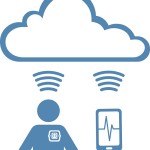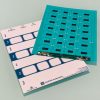Medical professionals are facing an unprecedented challenge in today’s fast-paced world of health care, and it has nothing to do with COVID-19, insurance coverage or vaccine availability. This is not an epidemic of disease, but of missing mobile medical equipment (MME). The side effects include operational inefficiencies resulting in increased costs, wasted time, and—perhaps most alarmingly—patient care being compromised. However, many healthcare organizations are fighting back by leveraging the power of real-time location systems (RTLS) technology to transform their facilities’ operations, providing better care for patients as well as an improved experience for workers—all while boosting ROI.
How Did We Get Here?
Day in and day out, hospital workers across the U.S. struggle to manage and locate massive amounts of MME, which includes everything from intravenous (IV) bags and wound vacs to crash carts and heart monitors. The reason medical personnel face such an uphill battle when it comes to locating MME is not necessarily because inventory is low or even because MME gets misplaced, but rather because most healthcare facilities simply don’t have a system in place to track equipment and tell employees where equipment is located on-site.
With poor data on inventory and asset visibility, hospital CFOs and heads of purchasing are left in the dark about the availability and location of medical equipment, often leading to redundant and/or unnecessary purchases. This inability to precisely gauge inventory coupled with the lack of systems to properly account for necessary equipment results in a strain placed medical staff who become tasked with tracking down the missing equipment. This can negatively impact emergency room wait times and prolong care to patients. Healthcare workers—many of whom are already exhausted from wrestling with heavy, time-sensitive workloads—play an extremely pivotal role throughout the healthcare ecosystem, and their time should be focused on extending quality care to patients, not tracking down medical equipment.
The RTLS Solution
RTLS systems utilize a wide array of technologies to track and locate assets in real time, including Wi-Fi, ultrasound and Radio Frequency Identification (RFID) where active RFID tags are adhered to pieces of MME. The tags communicate with an exclusive network to instantly provide precise equipment location to hospital staff, eliminating the need for manual searches and enabling the swift deployment of important MME assets. This is particularly critical in emergency care, as a typical large emergency room hosts over 120,000 visitors every year.
When nurses, technicians and other hospital staff can easily locate equipment, they can avoid lengthy delays and focus more exclusively on providing quality care, resulting in drastically improved patient outcomes. However, reducing the undue burden on healthcare workers and ameliorating the patient experience is only part of the equation. Another key benefit of RTLS technology is its ability to help streamline hospital operations by providing much-needed insight into asset utilization and workflow optimization.
Hospitals leveraging RTLS technology can utilize the data generated to make better-informed decisions regarding everything from equipment procurement and maintenance scheduling to workflow management and overall operational improvement. This, in turn, yields more effective resource allocation as well as reduced equipment underutilization and overutilization.
Return on Investment
With improved operational efficiency comes inherent fiscal rewards. Hospitals and healthcare facilities implementing a full-bodied RTLS approach are able to deliver data that can be transformed into hard dollar savings and increased ROI. When CFOs and purchasing heads are armed with a comprehensive view of how MME moves throughout a facility, they can prioritize equipment costs, including eliminating unnecessary or redundant purchases.
With the data-driven insights extracted from the deployment of RTLS, hospitals can right-size their asset fleets, make higher-quality purchasing choices and reduce rental costs. RTLS technology can also help mitigate the costly ramifications of equipment loss, theft, and misplacement. Gaining a holistic awareness of equipment location ensures that expensive devices are not misplaced, moved to unauthorized areas, or removed from the premises altogether.
Both for-profit and non-profit medical centers can realize value through RTLS. For-profit institutions are driven by the need to optimize costs and increase productivity; therefore, the ability to precisely track and manage equipment in real-time can net unparalleled cost savings, be it through streamlined workflows, better utilization of assets or lower equipment loss rates. Non-profit hospitals and healthcare facilities often operate on razor thin budgets, typically subsidized by donor funding, all of which make resource optimization and curbing wasteful spending paramount to their success. By embracing and implementing a robust RTLS solution, these hospitals, medical centers, and healthcare facilities are provided with the intelligence and visibility they need for fiscally conscious decision making about asset management, setting them up for more efficient operations and improved patient care.
In leveraging the insights delivered by RTLS technology, hospitals and healthcare facilities canundergo the kind operational overhaul they so desperately need, boosting ROI while simultaneously allowing for better working conditions for staff as well as more focused, immediate care for patients. RTLS is not unlike a Swiss Army knife when it comes to its many utilities, all of which serve as important tools to fix the problems created by the missing MME epidemic—and the faster the technology is embraced throughout the healthcare sector, the sooner the epidemic will be over.







